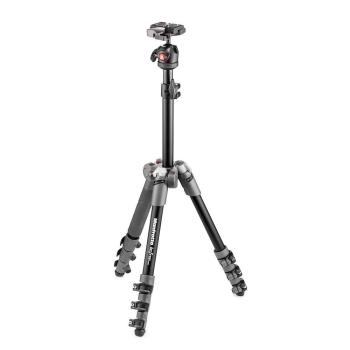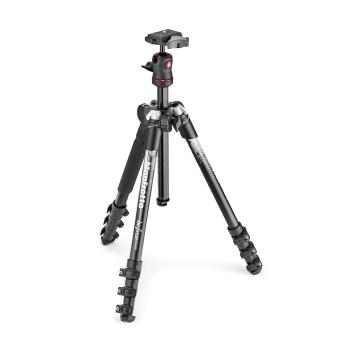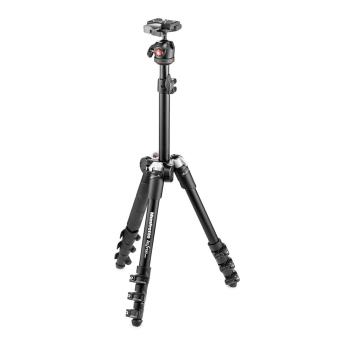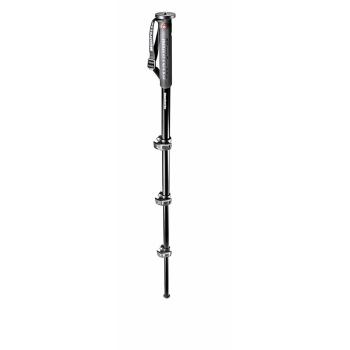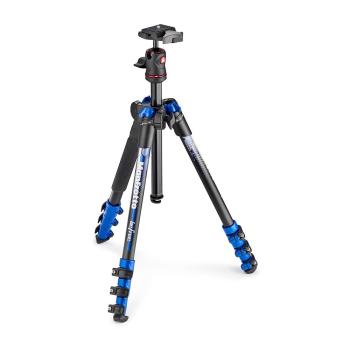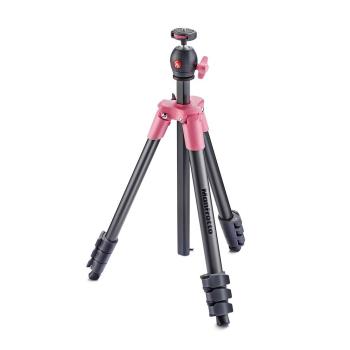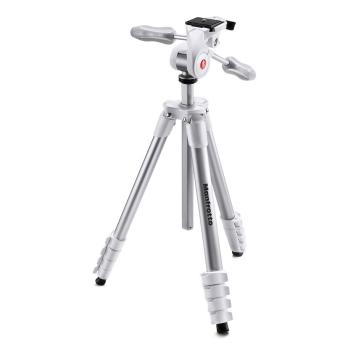
Гайд по покупке штатива

John Robertson
This tripod buying guide will help you to choose the best tripod – or tripods - for you, and help you discover how tripods help you explore the multiple styles of photography and expand your creative and technical possibilities.
Key Considerations when buying a tripod:
- Size: Tripods range in size from mini tripods that fit in your pocket, travel tripods that are perfect for a camera backpack and professional studio tripods capable of securely supporting the heaviest professional cameras. Make sure you buy the right size tripod for your needs. If you will be traveling with your tripod consider this: Never buy a bigger tripod than you are willing to carry… But always buy the sturdiest one you are willing to carry. If you plan to use your tripod in a studio or at home, a larger more solid tripod may be your preferred choice.
- Weight: The weight of a tripod is one of most important aspects to consider if you will be carrying your tripod. In addition to size, weight is influenced bywhat material the tripod is made of. Carbon Fiber is the lightest and strongest material for tripod legs and so is often preferred by outdoor and traveling photographers. Aluminum tripods are strong and lightweight and while a bit heavier are more affordable than carbon fiber.
- Stability: To function well a tripod must be free from movement and shake. A quality tripod has secure connections at all joints and is made of rigid materials that do not flex or bend. Quality in both design and materials is key.
- Camera/Device Type, Size & Weight: For the best results match your tripod to type of device as well as the size of equipment you will use it with. Consider also that video camera tripods are specialized and need extra weight capacity and stability.
- Type of Tripod Head: It is uncommon to just use tripod legs alone.Consider the type of tripod head that will best suit your needs, type of photography and equipment. You can choose a kit that combines a specific type of tripod head paired to an appropriate set of tripod legs. The most common types of tripod heads are Ball Heads, 3-Way Heads, 2-Way Heads, Geared Heads and Fluid Video Heads. See our Buying Guide to Tripod Heads for a more in-depth look into selecting the right tripod head for you.
- Additional Features: Tripods may have many different features that add value to certain types of photography. Center columns can add height to tripods and in some tripods among the Manfrotto 055 series or 190 range may also be used horizontally. The type of leg locks may differ on tripod models. Some people prefer QPL Travel lever locks while others prefer the lighter weight twist style M-Lock. Another very useful option to consider is a removable leg that quickly converts into a monopod as found in the Befree 2N1.
Why Do I Need to Buy a Tripod?
A tripod is not just for when the light gets low, requiring you to use a lower shutter speed. There are many reasons, both practical and creative for placing your camera on a tripod. You may be a wildlife photographer that is supporting a very heavy lens, you may be in the studio taking time to frame the perfect portrait or a landscape photographer waiting for that one ideal moment of light. Tripods allow for creative possibilities such as when you want to open your aperture, add a strong neutral density photographic filter or get a hard to reach angle or perspective. Other very common types of photography requiring a tripod include capturing multiple images to create time lapses or for long exposure shots such as in astro-photography.
As you can see, tripods are creativity tools that allow you easier control over light, not just support for dim light environments. Without a tripod, many of the photographs from the past would simply not exist. Many of the photographs we praise from masters, such as Ansel Adams, would not have been possible without a tripod.
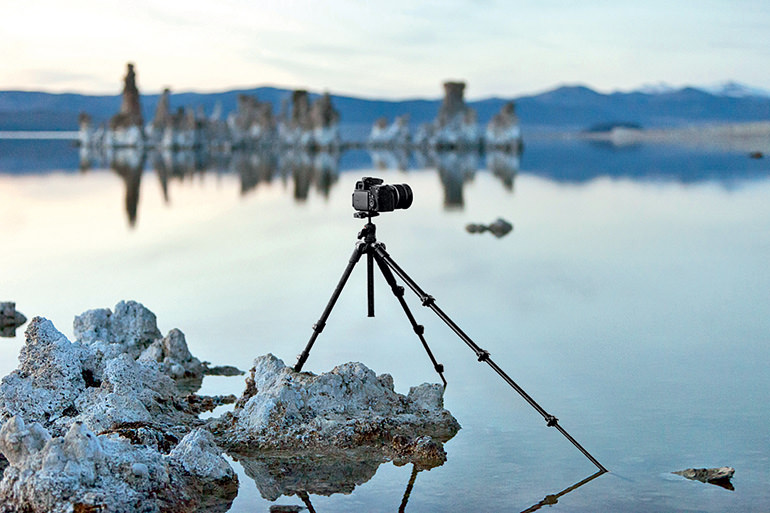

What is the Best Tripod for Me?
Now that we’ve defined what a tripod really is, you should also know that there is no “one tripod to rule them all”. In other words, if you have different types of equipment and use it in different places, you may want more than one tripod, each adapted to different shooting situations and gear. If you are just starting out in photography, there are many very good quality choices for beginner photographers on a budget. Keep reading our tripod buying guide to find recommendations for every level of photographer and many common types of photography.
The Best Travel Tripods
Traveling photographers are concerned with carrying as little as possible and so they look for the lightest, most stable tripod they can find. This makes travel tripods a good choice for landscape, nature and travel related photography as well the most popular choices for an all-around tripod.
Manfrotto’s Befree series is considered one of the best travel tripods collection for photographers. Befree tripods are surprisingly compact yet stable and come in multiple variations and styles with the choice between carbon fiber and aluminum.
Lightweight and compact is also the 190go! ideal for professional photographers who love the extremely fast-operating twist lock mechanism.

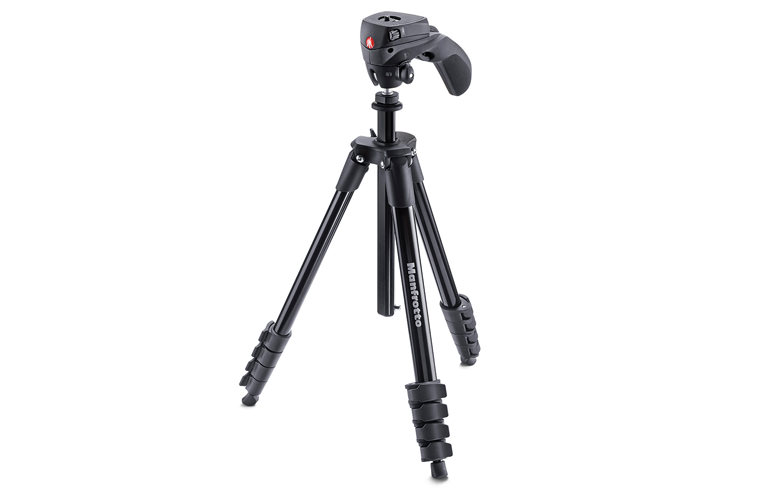
Tripods for Beginners and Hobbyists
The Manfrotto Compact Collection is a good choice if you’re just starting out. There are three models to choose from - Light, Action, Advanced - each offering different features around a base tripod design. At just 800gr and 39cm when folded, the Compact Light is an extremely portable solution making it a good tripod for smaller compact cameras, mirrorless cameras and an entry level DSLR cameras. The Advanced version takes your camera up to 167cm and offers an Advanced Ball Head, which is the perfect match for your mirrorless or DSLR camera with standard zoom lens. In between the two models is the Action, extending to 155cm, offering a special head that is good for both photography and video.
The Element Collection is an excellent value for the outdoor photography enthusiast and have features and quality that seasoned photographers will appreciate. Element Tripods come in small and big sizes that can accommodate anything from compact mirrorless to DSLR with zoom lenses. Element Traveler Big tripod kit supports cameras from Mirrorless to DSLR with large lenses. It also gives the flexibility to switch between tripod and monopod applications thanks to the detachable leg.
Table-top Tripods: Beginners and enthusiasts alike will appreciate the simplicity and versatility of PIXI tripods. Like its name, PIXI is small enough that you can always take it with you yet strong enough to hold a DSLR. The PIXI is great little tripod for photographers of all levels. PIXI tripods can even improve and enhance your phone photography.
Tripods for Enthusiasts and Professionals
Manfrotto 290 collection was carefully designed to accompany passionate hobbyists as they take more serious steps in their passion for photography. With the right balance of performance, practicality and versatility, the 290 is transportable, without any sacrifice in camera stability. Available in both aluminum and carbon fiber and in various sizes and head kits, the Manfrotto 290 will help get great results across all photographic styles.
The Manfrotto 055 with a X-PRO 3-Way Head is the choice of many advanced and professional photographers. The Manfrotto 055 series tripod is available in carbon fiber versions providing extra camera stability and maximum transportability, thanks to increased rigidity and reduced weight, or in aluminum, which may be a more logical choice if you do not carry your tripod around many times. For reference, the carbon version of the 3 section tripod weighs 70.54 oz (2000 g) while the aluminum version goes up to 88.18 oz (2500 g). This is for the tripod alone, without the head.

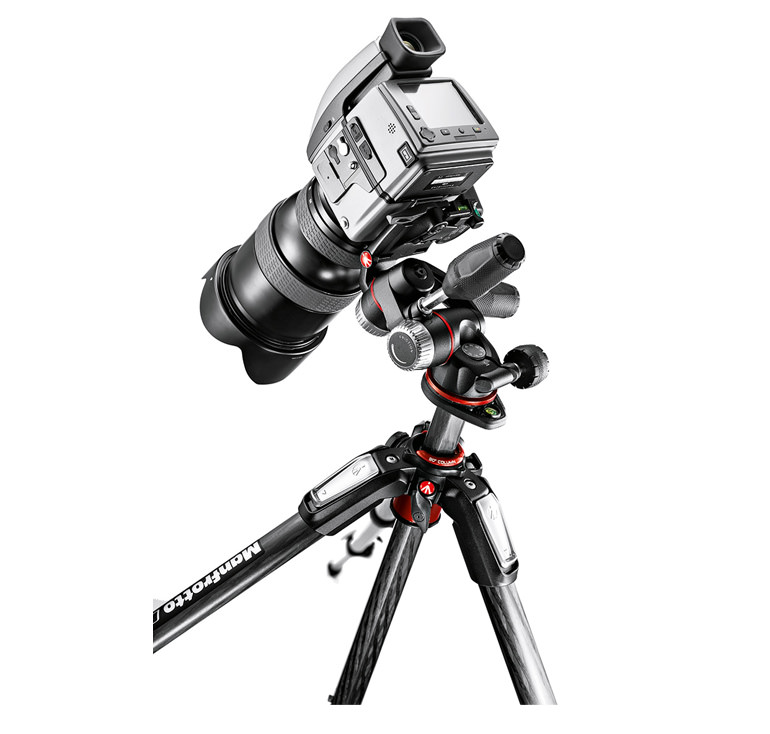
The 055 series has many features that make it a versatile companion for your adventures, either in the studio or on location. The center column extends vertically but can also be used horizontally, opening a wide range of framing and shooting possibilities, and of which can be done with the camera attached. A rotating bubble level on top and an Easy Link connector, which allows using photo or video accessories on an extending arm or bracket. The Quick Power Lock levers are easy to open and close, even with gloves on. With just one hand, they allow for the fast and precise setting of the individual height of each leg. From close to the ground, all the way up to its full extension, this is a working tool that will never let you down.
The 055 is available with 3 and 4 sections. How to choose the best tripod to buy? While many may prefer the 3 section, as it is usually said to be more stable, there is one advantage to the 4 section: with the legs folded the tripod has 21.26 in (54 cm) against 24.8 in (63 cm). This tripod’s shorter length may be an important factor when used as a travel tripod. If you’re willing to carry it, it is a great support for landscape photography with either a DSLR or a mirrorless camera, as well as when you’re using long lenses.
To better support your camera, nothing beats the 3-Way Head added to the 055. The X-PRO 3-Way Head is a unique head with retractable levers, which make it ultra-compact. The levers, when extended, allow for fine control of the head’s position, and the tripod also features new friction controls on the portrait and tilt axes, to help balance the weight of camera equipment. This ensures fine framing adjustments can be made with the locking knobs open, only locking everything down once the shot is ready.
The Best Professional Studio Tripods
If your studio is as far as you go when it comes to photography, then the Manfrotto 475B is the best tripod for you. Built in aluminum, the 475B is heavy, at 5300g, but that means it offers the ideal stability for the conditions it will be used in. Yet being heavy does not mean it is less agile than the other tripods when it comes to adjusting the legs or the center column. The geared center column allows safe, precise height adjustment, even under heavy loads up to a maximum of 12 kg, while the legs can be set to a different angle of spread for more flexible, versatile positioning, as well as keeping camera equipment well-balanced over the tripod's center of gravity.
Contributing to the 475B’s tripodstability is the center brace system, which can be operated in a symmetric or asymmetric way. This allows for a fast positioning of all the legs with the same spread or, if needed, individual setting of the angle for each leg, something that may be desirable when you need to reduce the tripod’s footprint. The telescopic center braces offer two “click stop” positions that allow you to find the position for the tripod legs.

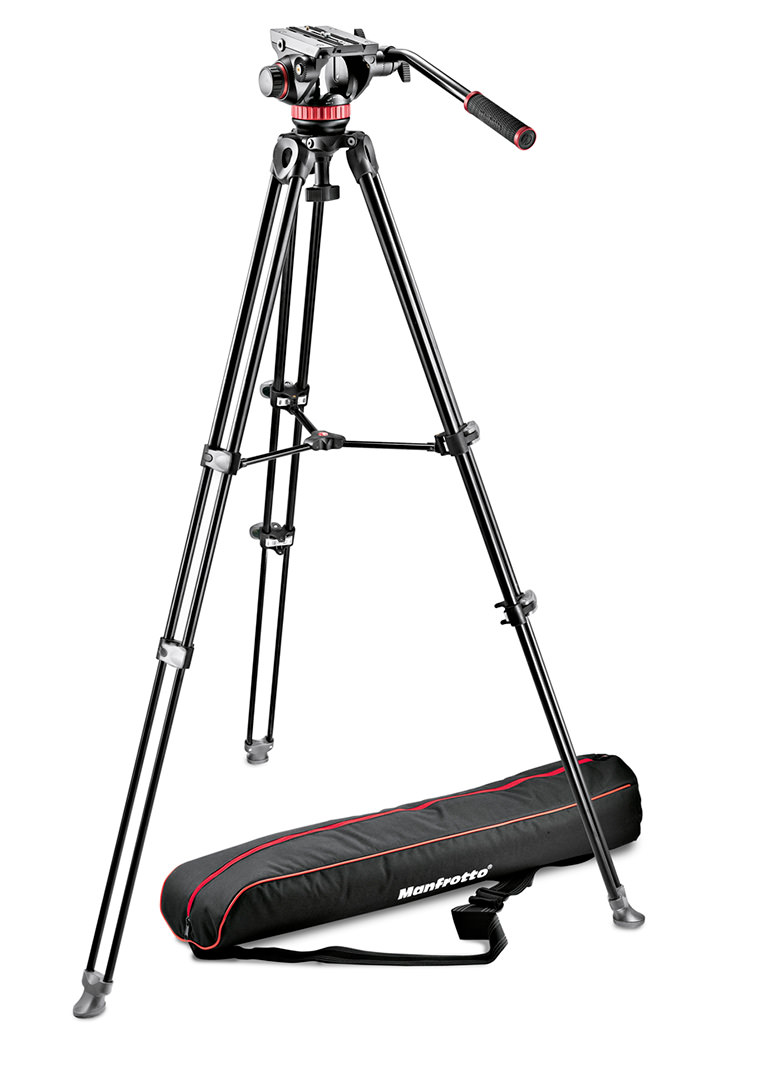
Video Tripods: a Buying Guide
Although you can use different tripods for video, sometimes even going for a compromise, if you’re both a photographer and videographer, or if you’re into professional video, you may need a different kind of tripod. The most important features of a video tripod is to create a completely stable platform capable of supporting video equipment and to securely mount a fluid video head that will provide smooth camera movement to the operator.
The Manfrotto Nitrotech Video Head Series provides fluid, counterbalanced movement like no other video head on the market. The Nitrogen piston mechanism ensures continuous counterbalance and the variable Fluid Drag system ensures smooth movements. Nitrotech Video Heads are available two sizes: Nitrotech N8 and Nitrotech N12 and may be paired with a wide variety of Manfrotto video tripods. Manfrotto also has a wide range of traditional fluid video heads with all the features professional videographers demand.
Depending on your equipment and application there are several sizes and types of video tripod legs including single-leg tripods that are easy to transport in the field and double-leg tripods that provide a more stable base with greater weight capacity. Spreaders are another common feature to video tripods that add stability. Spreaders may be in the middle of the tripod or at ground-level for ultimate stability in studio settings or other indoor locations.
How to Choose the Best Tripod to Buy: a Final Note
Finding the right tripod does not have to be a trial and error process. Hopefully our tripod buying guide will point you in the right direction. As a reminder here are some top tips for choosing the best tripod;
- Be clear: are you buying a tripod for photography or for videography?
- Where will you use your tripod? Will you transport it? If so how will you carry it?
- What is the load weight of your camera equipment including zoom lenses and accessories?
- What kind of tripod head or heads do you need for you type of photography?
Hopefully this tripod buying guide helps you to understand that tripods are essential for photography, and not just for when the light starts to fade. Tripods are not just a camera accessory; they give photographers extended creative options and can really help your photography stand out from the crowd.




























